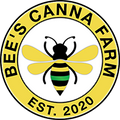One of the biggest concerns with cancer patients and AIDS patients is decreased appetite, leading to what is known as cachexia or wasting syndrome. It is estimated that half of patients that face cancer develop cachexia, where they have zero appetite, decreasing the quality of life and survival rates for cancer and AIDS patients (1).
Cancer cachexia is characterized by systemic inflammation due to cancer causing an increased release of cytokines (what causes inflammation) into the blood (1, 3). Being that systemic inflammation plays a role in cancer, cannabinoids such as CBD and THC exhibit anti-inflammatory properties that help combat systemic inflammation by significantly reducing cytokine activity (2). A huge win for cancer patients.
The issue with cachexia is that it lowers patients’ survival because of the loss of appetite (we need food to survive, especially when sick) and causes a poor response to cancer treatment, lowering the effectiveness of cancer treatment altogether, ultimately decreasing patient survival rates significantly (1).
Cachexia is not well understood by medical professionals, which means their treatments are not as effective as they would like. Because of the lack of effective treatments to improve those that deal with cachexia (cancer and AIDS patients), medical researchers are looking for alternatives to increase food intake for sick patients.(5).
This is where the endocannabinoid system (ECS) comes into play. Medical researchers now know that this complex receptor system plays a significant role in appetite stimulation and the want to "feed". In fact, CB1 receptors play such a huge role in appetite stimulation that rats who were given a CB1 antagonist (CB1 blocker), their appetite was significantly reduced to the point of starvation (4).
Come to find out that the endocannabinoid system plays a direct role in appetite stimulation, regulating body weight, and for developing the suckling response in neonates (4). This is huge because we understand that blocking CB1 receptors causes a loss of appetite and on the flip side, activation of CB1 receptors through cannabinoids (mainly THC, less for CBD) can increase the feeding response and increase one’s appetite (4).
The study showed that ghrelin, a hormone released by the fundus of the stomach which stimulates us to be hungry, was significantly decreased following a CB1 antagonist (blocker), further indicating the role that the ECS plays in appetite stimulation (5).
In addition to stimulating appetite, cannabis was also shown to help relieve pain, anxiety, and depression, which all cancer patients can benefit from greatly (5). Another huge win from one amazing plant!
Since we know that the endocannabinoid system plays a direct role in appetite stimulation and we can increase appetite through CB1 receptor activation through cannabinoids like THC and CBD, why haven’t we made this a standard treatment for those that are suffering from a loss of appetite?
I guess what makes me the most upset is that there are tons of studies showing the effectiveness of cannabis for appetite stimulation and the ability to reduce nausea and vomiting, and guess what the FDA does? They create synthetic THC drug (Dronabinol) to stimulate appetite and suppress nausea/vomiting.
You see, our medical system has its priorities wrong. It has money as the priority, which they made that apparent through making a synthetic compound that they can patent, when there is a natural compound (THC) that is more effective. You read that right, synthetic cannabinoids are less effective than naturally occurring cannabinoids because they miss out on the synergistic properties (6). There are 120+ natural occurring cannabinoids that are all acting together to increase their potential! One synthetic cannabinoid could not stand a chance against 120+ other cannabinoids working together. With that being said, why not just recommend the naturally occurring cannabinoids that were shown to be more effective over a synthetic one? That is an easy one, money comes before our health, regardless of how effective a natural plant is!
One amazing plant with seemingly endless benefits. Cheers to cannabinoid medicine and a good appetite.
Bee-Well,
Brandon Farless
*This information is for educational purposes only and simply sharing information regarding these studies. No medical advice or claims are being made.
References
- Aoyagi, T., Terracina, K. P., Raza, A., Matsubara, H., & Takabe, K. (2015). Cancer cachexia, mechanism and treatment. World journal of gastrointestinal oncology, 7(4), 17–29. https://doi.org/10.4251/wjgo.v7.i4.17
- Atalay, S., Jarocka-Karpowicz, I., & Skrzydlewska, E. (2019). Antioxidative and Anti-Inflammatory Properties of Cannabidiol. Antioxidants (Basel, Switzerland), 9(1), 21. https://doi.org/10.3390/antiox9010021
- https://www.cancerresearchuk.org/about-cancer/coping/physically/diet-problems/types/cachexia#:~:text=What%20is%20cachexia%3F,burn%20calories%20faster%20than%20usual.
- Kirkham, T. C., Williams, C. M., Fezza, F., & Di Marzo, V. (2002). Endocannabinoid levels in rat limbic forebrain and hypothalamus in relation to fasting, feeding and satiation: stimulation of eating by 2-arachidonoyl glycerol. British journal of pharmacology, 136(4), 550–557. https://doi.org/10.1038/sj.bjp.0704767
- Aquino, G. (2005, May 26). Medicinal marijuana: A legitimate appetite stimulant?. Nutrition Bytes. https://escholarship.org/uc/item/3wr5g87k
- Cohen, K., & Weinstein, A. M. (2018). Synthetic and Non-synthetic Cannabinoid Drugs and Their Adverse Effects-A Review From Public Health Prospective. Frontiers in public health, 6, 162. https://doi.org/10.3389/fpubh.2018.00162






